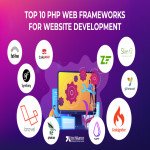
Embracing the Digital Frontier
In an era defined by rapid technological advancement, digital technology has transformed every aspect of our lives, from how we communicate and work to how we access information and entertainment. In this blog, we embark on a journey through the digital frontier, exploring the evolution, impact, and future trajectory of digital technology. The Evolution of Digital Technology: Digital technology has come a long way since its inception, evolving from the early days of bulky mainframe computers to the sleek, interconnected devices we rely on today. Key milestones such as the invention of the microprocessor, the development of the internet, and the proliferation of mobile devices have paved the way for a digital revolution that continues to reshape our world. The Impact on Society and Culture: The widespread adoption of digital technology has had profound implications for society and culture, fundamentally altering how we live, work, and interact with one another. From the rise of social media and digital entertainment to the digitization of industries such as healthcare and finance, digital technology has permeated every aspect of our daily lives, blurring the lines between the physical and virtual worlds. Empowering Innovation and Creativity: Digital technology has democratized access to information and resources, empowering individuals and organizations to innovate and create like never before. From open-source software development to online collaboration tools, digital technology has leveled the playing field, allowing aspiring entrepreneurs, artists, and innovators to turn their ideas into reality and reach global audiences with ease. Challenges and Opportunities: While digital technology has brought about countless benefits, it also poses significant challenges, from cybersecurity threats and privacy concerns to digital inequality and ethical dilemmas. As we navigate the complexities of the digital age, it's essential to address these challenges proactively while seizing the opportunities for positive change and innovation that digital technology affords. The Future of Digital Technology: Looking ahead, the future of digital technology holds boundless possibilities, from advancements in artificial intelligence and virtual reality to the proliferation of the Internet of Things and 5G connectivity. As emerging technologies continue to converge and evolve, they will shape the way we live, work, and interact in ways we can scarcely imagine today. Conclusion: In conclusion, digital technology is a powerful force that has transformed our world and will continue to do so in the years to come. As we embrace the opportunities and challenges of the digital frontier, it's essential to harness the potential of technology for positive change, ensuring that it serves humanity's collective interests and fosters a more inclusive, equitable, and sustainable future for all. Join us as we navigate the ever-changing landscape of digital technology and embark on a journey of innovation, discovery, and growth.

Exploring the Boundless Potential of Flutter
Title: Exploring the Boundless Potential of Flutter: Revolutionizing App Development In today's fast-paced digital landscape, mobile app development demands agility, efficiency, and scalability. Flutter, Google's open-source UI toolkit, has emerged as a game-changer in the realm of app development, offering a seamless cross-platform experience like never before. With its expressive and flexible framework, Flutter empowers developers to craft stunning native interfaces for iOS, Android, and beyond, all from a single codebase. At the heart of Flutter lies its Dart programming language, renowned for its simplicity and productivity. Dart's reactive-style programming enables developers to build UIs effortlessly, with hot reload functionality allowing for real-time code changes and instant updates. This iterative development process significantly accelerates time-to-market, enabling teams to iterate rapidly and refine their apps with unparalleled speed and precision. One of Flutter's most compelling features is its rich set of customizable widgets, which serve as the building blocks for crafting immersive user experiences. Whether it's sleek animations, fluid transitions, or intricate layouts, Flutter's widgets empower developers to bring their creative visions to life with ease. Moreover, Flutter's extensive widget catalog includes platform-specific components, ensuring a native look and feel across diverse devices and operating systems. Beyond its robust UI capabilities, Flutter excels in performance optimization, delivering smooth and responsive apps that delight users. By leveraging Flutter's compiled codebase, developers can achieve near-native performance, eliminating common performance bottlenecks associated with traditional cross-platform frameworks. This level of performance consistency, coupled with Flutter's minimalistic footprint, positions it as the ideal choice for resource-intensive applications and high-traffic scenarios. Furthermore, Flutter's comprehensive tooling ecosystem further enhances the development experience, offering a suite of tools and plugins for every stage of the app lifecycle. From integrated development environments like Visual Studio Code and Android Studio to powerful debugging and testing utilities, Flutter equips developers with the necessary resources to streamline their workflow and maximize productivity. In essence, Flutter represents a paradigm shift in mobile app development, empowering developers to build beautiful, high-performance applications with unparalleled efficiency and flexibility. Whether you're a seasoned developer looking to streamline your workflow or a newcomer eager to dive into the world of app development, Flutter offers a compelling platform to unleash your creativity and build the next generation of mobile experiences. As Flutter continues to evolve and mature, its potential to reshape the app development landscape knows no bounds, ushering in a new era of innovation and possibility.

The Art and Science of UI/UX Design
In the vast landscape of digital products, from websites to mobile applications, there exists a realm where creativity meets functionality – UI/UX design. UI (User Interface) and UX (User Experience) design are the driving forces behind the creation of compelling digital experiences that captivate users, evoke emotions, and ultimately drive success in the digital realm. In this comprehensive exploration, we delve into the intricate world of UI/UX design, uncovering its principles, processes, and profound impact on the way we interact with technology. Understanding the Role of UI/UX Design: At its core, UI/UX design revolves around the concept of user-centricity – placing the user's needs, preferences, and behaviors at the forefront of the design process. UI design focuses on the visual and interactive elements of a digital product, encompassing aspects such as layout, typography, color schemes, and navigation. Meanwhile, UX design encompasses the overall experience of using a product, including factors like usability, accessibility, and emotional resonance. Together, UI and UX design work in harmony to create seamless, intuitive, and delightful experiences for users. The Importance of User Research: Key to effective UI/UX design is understanding the target audience through comprehensive user research. By conducting user interviews, surveys, and observations, designers gain valuable insights into user behaviors, preferences, and pain points. This data informs design decisions and ensures that products are tailored to meet the needs and expectations of their intended users. User research serves as the foundation upon which successful UI/UX designs are built, guiding designers in creating experiences that resonate with their audience on a deep level. From Wireframes to Prototypes: The Design Process Unveiled: Armed with insights from user research, designers embark on the design process, beginning with wireframing and prototyping. Wireframes serve as blueprints for the layout and structure of a digital interface, outlining the placement of elements and the flow of user interactions. Prototypes, on the other hand, bring designs to life through interactive mockups, allowing designers to test usability, gather feedback, and iterate on their designs. This iterative process of wireframing and prototyping enables designers to refine their concepts, optimize user flows, and ultimately deliver polished, user-friendly interfaces. Usability Testing: Iterating Towards Perfection: Central to the UI/UX design process is usability testing – the practice of observing real users interact with a digital product and gathering feedback on its usability and effectiveness. Through methods such as moderated testing sessions, heatmaps, and analytics, designers gain insights into how users navigate the interface, identify pain points, and uncover opportunities for improvement. Usability testing enables designers to iterate on their designs, addressing usability issues and refining the user experience to ensure that it meets user needs and expectations effectively. The Intersection of Aesthetics and Functionality: While UI/UX design encompasses both aesthetics and functionality, successful designs strike a delicate balance between the two. Aesthetically pleasing interfaces draw users in, captivate their attention, and evoke positive emotions, while functional designs enable users to accomplish their goals efficiently and intuitively. By incorporating principles of visual hierarchy, typography, color theory, and interaction design, designers create interfaces that not only look great but also facilitate seamless user interactions and task completion. The Impact of UI/UX Design on Business Success: Beyond creating engaging digital experiences, UI/UX design plays a critical role in driving business success. Well-designed interfaces increase user satisfaction, boost engagement, and foster brand loyalty, ultimately leading to higher conversion rates and increased revenue. Moreover, by prioritizing usability, accessibility, and emotional resonance, businesses can differentiate themselves in the market and build lasting relationships with their customers. UI/UX design has a tangible impact on key business metrics such as customer retention, user acquisition costs, and overall profitability, making it a strategic imperative for businesses seeking to thrive in the digital age. Conclusion: In conclusion, UI/UX design is not merely a creative endeavor; it's a strategic imperative for businesses seeking to create meaningful and memorable digital experiences. By placing the user at the center of the design process and prioritizing usability, accessibility, and emotional resonance, designers can create interfaces that captivate users, drive engagement, and ultimately contribute to business success. As technology continues to evolve and user expectations evolve, UI/UX design will remain a critical enabler of innovation, differentiation, and growth in the digital landscape. Join us in embracing the art and science of UI/UX design as we continue to craft engaging digital experiences that resonate with users around the world.

Unveiling the Power of Laravel: Revolutionizing Web Development
In the dynamic realm of web development, efficiency, scalability, and robustness are paramount. Laravel, the PHP framework renowned for its elegance and simplicity, has emerged as a cornerstone in modern web application development, empowering developers to build stunning, feature-rich websites and applications with unparalleled ease. At the core of Laravel's appeal lies its expressive and intuitive syntax, which streamlines the development process and enhances developer productivity. With a rich set of built-in features and utilities, Laravel simplifies common web development tasks, from routing and authentication to database management and caching. This comprehensive toolkit enables developers to focus on crafting exceptional user experiences rather than wrestling with boilerplate code. One of Laravel's standout features is its elegant ORM (Object-Relational Mapping) system, Eloquent. Eloquent provides a fluent, expressive interface for interacting with databases, allowing developers to define database schemas and perform complex queries with remarkable simplicity. By abstracting away the intricacies of SQL, Eloquent accelerates development and ensures database operations are performed efficiently, resulting in faster, more responsive applications. Furthermore, Laravel's modular architecture and robust ecosystem of packages and extensions empower developers to extend and customize their applications with ease. Whether it's integrating third-party APIs, implementing advanced authentication mechanisms, or adding real-time features with WebSocket support, Laravel's vibrant community ensures there's a package for virtually any requirement, saving developers time and effort. In addition to its developer-friendly features, Laravel prioritizes security, offering built-in protection against common web vulnerabilities such as SQL injection, cross-site scripting (XSS), and cross-site request forgery (CSRF). With features like route middleware, CSRF protection, and password hashing, Laravel equips developers with the tools they need to safeguard their applications and user data, ensuring a secure and trustworthy user experience. Moreover, Laravel's robust testing suite, powered by PHPUnit, enables developers to write comprehensive unit tests and conduct automated testing, ensuring the reliability and stability of their codebase. By embracing test-driven development (TDD) principles, developers can identify and address issues early in the development lifecycle, resulting in higher-quality software and a more seamless user experience. In summary, Laravel stands as a testament to the power of elegant simplicity in web development. With its expressive syntax, comprehensive feature set, and vibrant ecosystem, Laravel empowers developers to build sophisticated web applications that exceed expectations. Whether you're a seasoned developer seeking to streamline your workflow or a newcomer eager to dive into the world of web development, Laravel offers a compelling platform to unleash your creativity and build the next generation of web experiences. As Laravel continues to evolve and innovate, its influence on the web development landscape is sure to endure, driving progress and pushing the boundaries of what's possible on the web.



